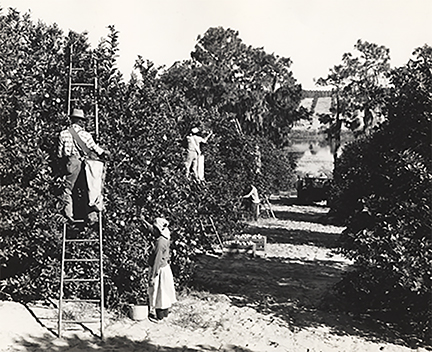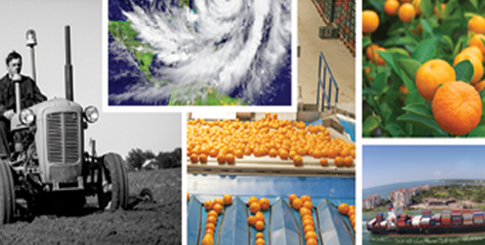“The size of the farm then was only as big as the size of the family; the more kids you had, the more pickers you had,” Wishnatzi explains. “There were literally thousands of small growers, with no onehaving more than a few acres.”
1930s
Markets Grow
On September 6, 1930, George W. Jenkins opens a grocery store in Winter Haven, called Publix Food Store.
Fort Lauderdale’s Port Everglades becomes the state’s next official port of entry in 1931. In the decades ahead, the port becomes a major hub for fruit and vegetable imports, especially bananas from Central America.
In 1933, on a mission to produce better citrus products, a small group of Florida citrus growers form a cooperative.


Photograph courtesy of Seal Sweet International.
The group will eventually become known as Florida’s Natural and in the twenty-first century becomes one of the largest citrus grower cooperatives with 1,000 grower-owners working 60,000-plus acres of groves in the heart of Central Florida.
On September 10, 1934 the Tampa Wholesale Produce Market opens just minutes from downtown on Hillsborough Avenue. It becomes home to a number of distributors that sell to nearby retailers, hospitality businesses, and restaurants throughout the Tampa Bay area.
The same year, in 1934, Florida’s very first farmers’ market opens in Sanford in December. Sanford State Farmers Market provides a central location where growers can sell their produce directly to consumers.
Within just a few years, the market is bringing in sales of $500,000 annually.
Jenkins’ grocery store is so well received by the community, be builds a second location across town in 1935.



